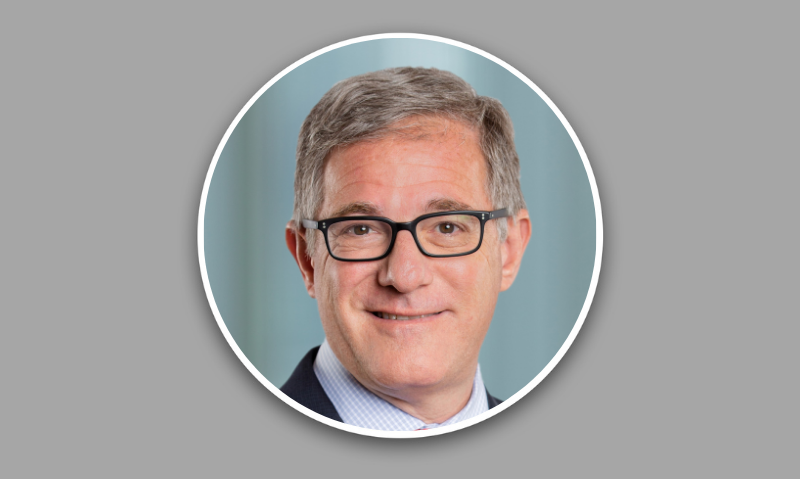
The insurance investment market has changed rapidly over the past few years with a once in a century pandemic and in recent days a full-blown war in eastern Europe. Randy Brown, Chief Investment Officer, of Canadian insurance giant Sun Life, says he believes that we have hit an inflection point - and the market has not realised it yet.
In a recently released Clear Path Analysis report, Insurance Asset Management - North America 2022, several market experts from insurance groups including AllianceBernstein, Mercer, and Liberty Mutual, explore issues around good asset management in the post-pandemic world.
"Nature abhors a vacuum, and adds that this disequilibrium
can’t exist forever."
“There is no surprise that we have been in a 35-year bull market in rates,” says Brown on the market’s current outlook, which most assume will continue to grow. “Despite some speed bumps along the way, it has mostly been a one-way trade down in rates. I would say that negative real rates are not sustainable, but you still have negative real rates of return for the foreseeable future for the vast majority of liquid portfolios.”
He adds that, like the old expression, nature abhors a vacuum, and adds that this disequilibrium can’t exist forever.
"One of the major economic risks was that the markets were
completely mis-pricing inflation."
“Nominal investment grade spreads look very tight. And when adjusted for duration in credit quality, they look even tighter. Governments need to trim their debt,” he says. “Why we don’t issue 500-year bonds at current rates is beyond me. We are already seeing 100-year bonds in some countries.”
Brown says that two years ago there were internal discussions at Sun Life that one of the major economic risks was that the markets were completely mis-pricing inflation. He says they did not foresee a pandemic but did feel that the market had gotten too complacent and inflation expectations were too low. “As a result, we protected ourselves by matching our inflation linked liabilities to inflation linked assets,” he says.
Under the current circumstances, inflation is going to be elevated for a while, he says. Issues around supply chain delays will be a key factor in driving up inflation in the US market. On top of this, is the Ukraine/Russia crisis, and its effects on oil prices, which could further exacerbate this.
“The US Federal Reserve and other central banks have stated clearly that they would allow inflation to be much more persistent than it had been in the past,” Brown says. “There is no question they are going to allow this in exchange for full employment.”
Brown says that net issuance has been high, which means that many of these trades are crowded. “The process of central banks taking rates down really low, forcing investors out of the risk and duration spectrums to get incremental return is a classic response to a crisis,” he explains.
"I don’t believe the returns that we have gotten in the past are going to be the same as the ones we get moving forward on a global level."
This comes at a time when many of the 100 US public pension funds are now over 98% funded. “As they de-risk, they are going to sell equities, buy bonds, including corporates, at a period when there is a negative net supply looking forward.” He adds there is a structural bid for fixed income, particularly long duration fixed income, which is currently underappreciated by the market.
“We have heard about private markets forever, and everyone is increasing their allocation, including us. There is still a lot of dry powder on the side lines. My question around private equity is if we are recycling deals from one sponsor to the next,” he says, and continues, saying that external valuations are allowing for this uptake and are bringing pricing power into these companies. “There is some support for this but there is also a lot of dry powder chasing these deals. I don’t believe the returns that we have all gotten in the past couple of years are going to be the same as the ones we get moving forward on a global level,” Brown adds.
"The ageing society in developed countries is one area he doesn’t believe
we see enough focus on."
In other areas to watch for, Brown stated that mortgage-backed securities and treasury issuance were seeing a larger demand gap, which will have to be filled. “Central banks have gone from growing balance sheets, to neutral, to shrinking,” he explained. “We have negative nominal yields on $13 to $15 trillion of developed market debt in nominal terms. In real terms, the number is something over $40 trillion. This money has to get repaid at some point. This will mean negative future growth because taxes will have to go up.”
Some of the causes and larger macro trends were also of key concern to Brown, who stated that the ageing society in developed countries is one area he doesn’t believe we see enough focus on. “We have a decreasing working population in the developed world, whereby fewer people are supporting retirees. This burden is really going to fall more on working aged people and taxes are going to have to go up. It will be a big headwind for the market, for spending and deficits.”
It also contrasts with the balance sheets insurers have in Asian markets. He states that this issue “bears a lot of watching and plays to the emerging market debt conversation”.